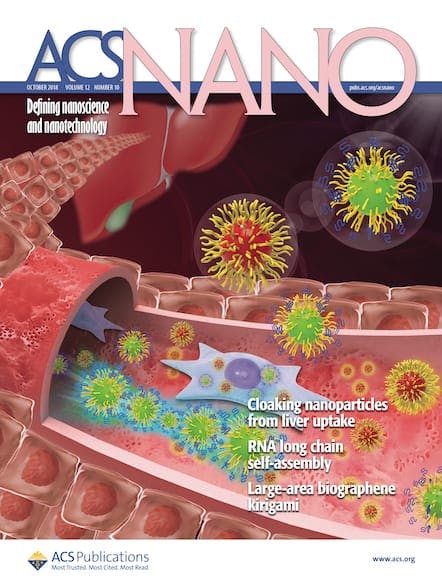Andrew Wee is a Professor of Physics at the National University of Singapore. In the years leading to his current roles, he has had numerous titles and accolades to his name. He received a B.A. in 1984 and an M.A. in 1987 from the University of Cambridge. He completed his Ph.D. in 1990 at the […]


Andrew Wee is a Professor of Physics at the National University of Singapore. In the years leading to his current roles, he has had numerous titles and accolades to his name. He received a B.A. in 1984 and an M.A. in 1987 from the University of Cambridge. He completed his Ph.D. in 1990 at the University of Oxford.
Can you please tell me about your current work with surface and nanoscale science, specifically Scanning Tunneling Microscopy (STM) and Atomic Force Microscopy (AFM)?
My current work in surface and nanoscale science involves the use of STM/AFM to study two specific fields: (1) novel 2D materials and heterostructures and (2) the molecule-substrate interface, including molecular self-assembly and on-surface reactions.
What are some problems that your research has helped solve?
Let me illustrate with the topic of 2D transition-metal dichalcogenides (2DTMDs), which exhibit a multitude of exotic properties that can be exploited in electronic, magnetic, storage, sensing, or catalytic applications. In particular, if 2D van der Waals magnets exist, they would be ideal atomically thin building blocks for 2D spintronics. Theories have predicted intrinsic magnetism in 2D VX2, such as vanadium diselenide and vanadium ditelluride, which have also been claimed in some experimental reports. We show, however, that 2D VSe2 is not intrinsically ferromagnetic but displays evidence of spin frustration. A magnetic transition in 2D VSe2 can be induced at the contamination-free interface between VSe2 and a ferromagnetic adlayer, via interface hybridization.
We also found that the reconstructed VSe2 monolayer with Se-deficient line defects displays room-temperature ferromagnetism under X-ray magnetic circular dichroism and magnetic force microscopy, consistent with the density functional theory calculations. This work possibly resolves the controversy on whether monolayer VSe2 is intrinsically ferromagnetic and highlights the importance of controlling surface defects in 2D crystals, which influence potential device performance.
What are some problems you’re currently trying to solve?
Extending this work on 2D magnets, we are exploring new ways of making 2D materials magnetic at room temperature, as this has real-world applications in flexible and wearable 2D spintronic devices. In another project on 2D carbon networks (2), we study how 2D covalent organic frameworks (COFs) can form the basis of advanced membranes for liquid-phase hydrocarbon separations, important for efficient and sustainable separation processes in the petrochemical industry.
What are some applications of STM and AFM that the general public may be familiar with?
STM and AFM are advanced surface science tools that give atomic-scale images of conducting (STM) and insulating (AFM) surfaces. In addition, scanning tunneling spectroscopy (STS) gives the local electronic density of states of the surface. As such, STM/AFM may be used to study any material where surfaces are important, e.g., electronics, catalysis, batteries, corrosion, etc.
Can you briefly tell us about the importance of surface and nanoscale science and its recent advancements?
With reference to my research interests, surface and nanoscale science are important as it helps us understand the properties of new and novel low dimensional materials, which have potential applications in electronics, photonics, energy materials, etc.
What do you think is the most interesting and/or important unsolved problem in your field?
In my specific field of 2D materials, the most interesting problem(s) is to discover novel 2D materials with unique properties (electronic, magnetic, optical, etc.) useful for next-generation flexible and wearable devices.
Are there any unconventional methods you may have to help develop new and novel ideas?
Our unique approach is to adopt an all-vacuum (in-situ) environment to grow and study these 2D materials and heterojunctions or to investigate molecule-substrate interactions. This approach enables us to investigate the ideal properties of these surfaces/interfaces without exposure to the atmosphere. Such definitive information is important for progress in the field.
Have you received any good advice that stuck with you? How has it helped you within your career?
Andre Geim (winner of the Nobel Prize in Physics 2010) highlighted the importance of switching fields every five years to tackle new and fresh physics problems. As such, I have moved from traditional surface science to graphene and 2D materials, 2D magnets, 2D topological insulators, as well as molecular self-assembly, and on-surface reactions. These fields were unfamiliar to me at that point of switching, but I knew they were going to be important.
What advice would you give people who want to pursue a career in science? If you had to start over again, what advice would you give yourself?
My career progress may not be typical. In the last 30 years, Singapore has seen rapid changes in the research landscape. In particular, when I returned to Singapore in 1990 and joined NUS, I had no grants or Ph.D. students. I had to be resourceful in the early years. Fortunately, Singapore then embarked on a series of well-resourced research and innovation plans and budgets, from which my research program benefitted. The advice I would give myself and others is: Work on significant research problems that people care about so that your work will make a significant impact.
